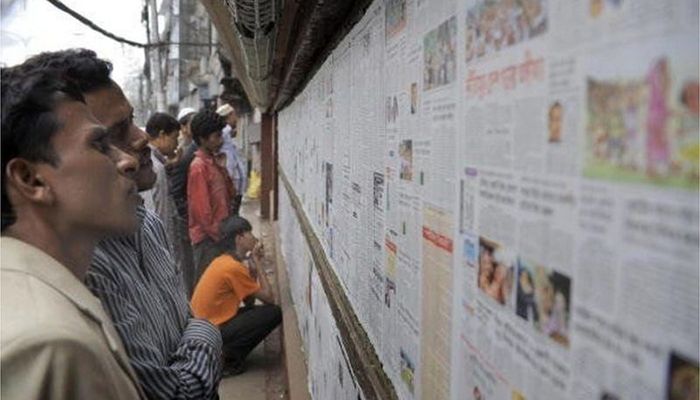
Desk Report
Publish: 07 Mar 2021, 11:22 pm

Even a decade ago, the national dailies of Bangladesh, especially the leading newspapers, regularly published cartoons on the front pages, which often gave rise to widespread discussion. But now cartoons, especially political cartoons, do not catch the eye on the front pages of magazines.
Over the past few days, many of the country's social media users have been sharing some old cartoons, which were published in a leading daily newspaper about important political figures from 2001 to 2006.
At that time, the cartoonists of some of the national dailies of the country also got wide recognition through such cartoons. Raushan Ara Mukta, a regular reader of the newspaper, says that he doesn't like cartoons anymore.
"I used to watch a lot of cartoons. There were a lot of inflammatory cartoons with a lot of messages. But now I don't see that much," he said.
Cartoons were regularly published in the newspapers of the country even before the independence of Bangladesh and during the military rule in independent Bangladesh.
In the two decades since the elected government came to power after the departure of General Ershad in 1990, cartoons depicting various issues or individuals on the front pages of newspapers have become very popular.
But now Shamim Reza, a journalism teacher at Dhaka University, thinks that newspapers are no longer interested in cartoons.
"In the last two decades from the 90's, cartoons have become a contemporary issue. The important thing is that some people created cartoon genres on the front page. There have been cartoons about people from many important political, business or cultural worlds.
"Many such artists became popular around it. It is absolutely not there now. Political cartoons in particular are now at zero, ”he said.
Mr Reza says that for whatever reason the editorial policy around the cartoon has changed or they have been forced to bring around the cartoon.
Shahriar Khan, the executive editor of The Business Standard, a well-known cartoonist, has worked for another English daily, the Daily Star, for more than two decades. His numerous cartoons appeared on the front page of the Daily Star.
Mr. Khan says he thinks the atmosphere of tolerance for cartoons is no longer the same as before.
"Cartoons are actually satires and expressions of opinion. Expressions can be made through a satire. Self-censorship has been created with cartoons because of the reduced tolerance or the reaction to cartoonists or the media. That's why cartoons are not seen."
Asked if he was as comfortable drawing cartoons as before, he said, "I don't know if I would be subject to any black law if I drew cartoons about the country's policy."
This is not the only cartoonist Ahmed Kabir Kishore's description of being tortured for cartoons after his recent release in Bangladesh.
Earlier, the editor of a national daily's fun magazine apologized for a cartoon and sent the cartoonist to jail.
On the other hand, well-established cartoonists are not the only ones who have such concerns about cartoons. On the contrary, Chandrika Noorani Irabati, one of the young cartoonists, says that they too are now realizing that cartoons, especially those with influential people, have become a risky business.
"I think it's okay to draw, isn't it? How far will it be okay to draw? No political or religious cartoons can be drawn," he commented.
Subscribe Shampratik Deshkal Youtube Channel
© 2024 Shampratik Deshkal All Rights Reserved. Design & Developed By Root Soft Bangladesh